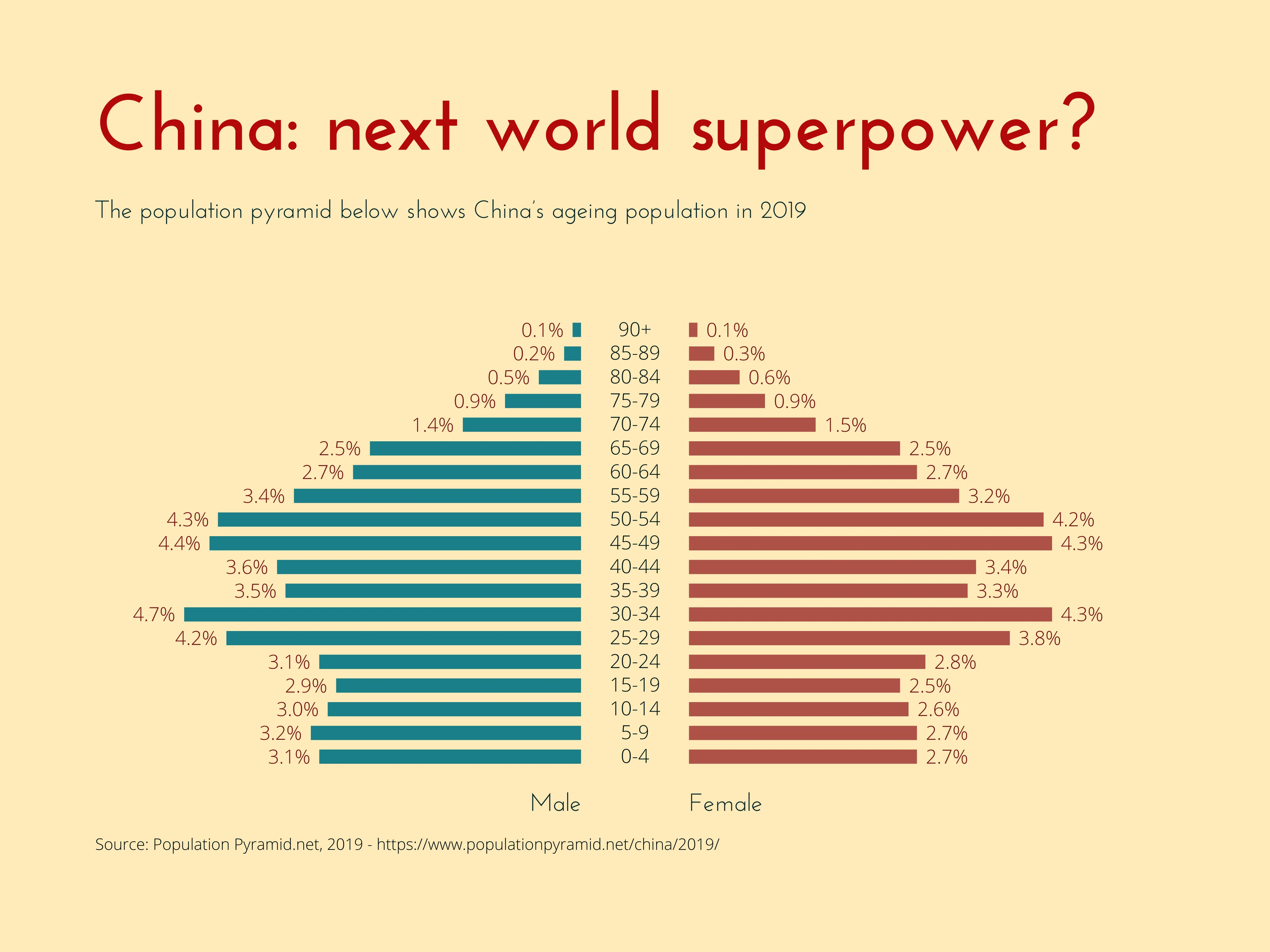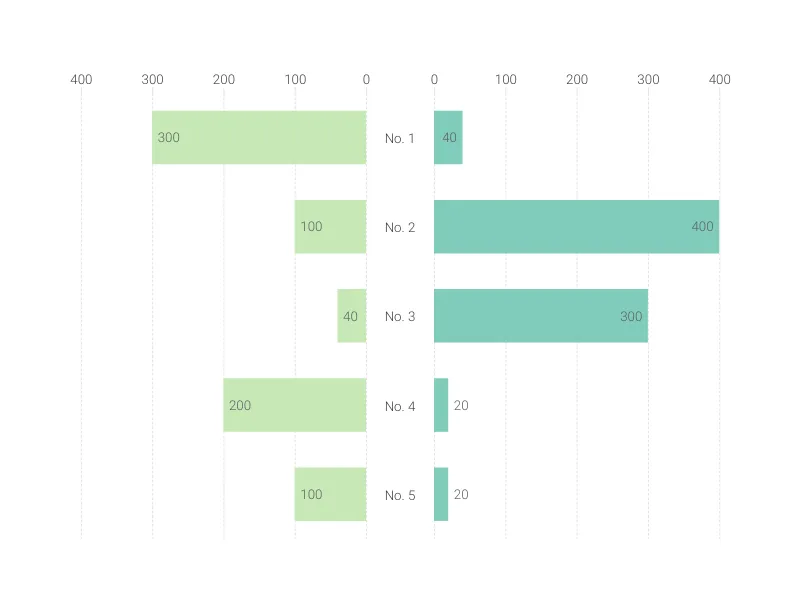Chart Vizzard
Vizzlo's AI-based chart generatorChina: next world superpower?

The size of China’s population (currently at a total of 1,433,783,686 in October 2019) has long been a hot political issue in China. After rapid population growth in the middle of the 20th century, the Chinese government sought to limit population growth by introducing the famous “one-child policy.”
The scheme, which rewarded couples that agreed to have just one child with cash bonuses and better access to housing, proved so successful that the birth rate of 1.4 children per woman fell below the replacement rate of 2.1 children per woman. As a result, experts are now concerned that China’s low birth rate, combined with its aging population, will damage its future economic development.
The one-child policy was met with a great deal of resistance, particularly in rural areas. Families who breach this policy tend to lie on census polls, so the true population of China may be a bit skewed. This means that Chinese population statistics have become less reliable since the policy began in the 1970s. The policy was ended by the Chinese government in 2016.
Much of China’s economic growth has been attributed to its abundant and cheap workforce, combined with its low social costs. However, with the number of young Chinese falling and the number of elderly Chinese increasing, it is not certain whether China’s economy can continue to grow at the same rapid rate.
China also has an abnormal ratio of male to female births. Whereas in most countries more girls are born than boys, in China the reverse is true. Many suspect that this is because of a preference for boys among Chinese families.

This is an example of Vizzlo's “Butterfly Chart”
Create a butterfly chart to compare two data sets side by side.